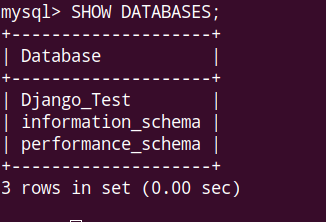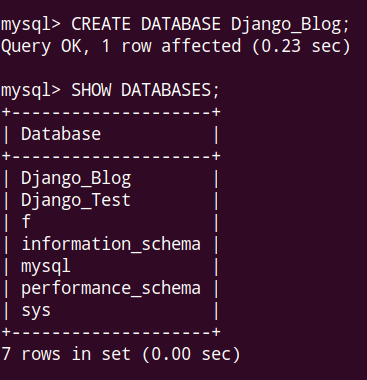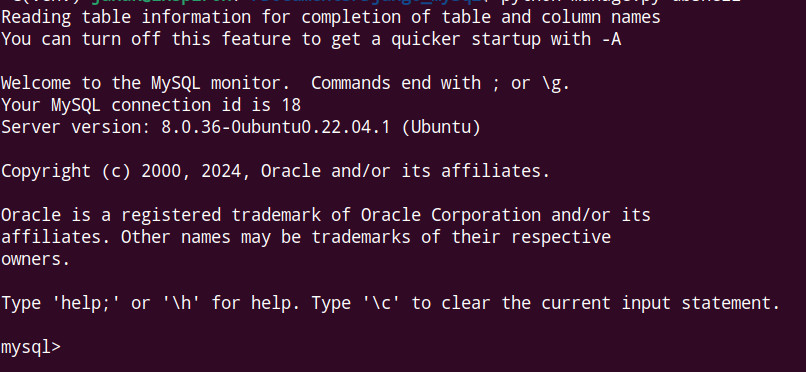Django

Django On MySql
In this article we will learn how to use MySql with Django. Operating system used in this process in Ubuntu 22.04.
For installation of MySql on Ubuntu 22.04 check this article.
Open terminal.
sudo mysql -u root -pmysql>SHOW DATABASES;
mysql> CREATE DATABASE Django_Blog;
mysql> SHOW DATABASES;
mysql> CREATE USER 'djangouser'@'localhost' IDENTIFIED WITH mysql_native_password BY 'Passwordofuser';
mysql> GRANT ALL IN Django_Blog.* TO 'djangouser'@'localhost';
mysql> FLUSH PRIVILEGES;
Exit Mysql.
sudo systemctl daemon-reload
sudo systemctl restart mysqlmkdir Django_MySql
cd Django_MySqlpython3 -m venv venvsource venv/bin/activateInstall Django
pip install DjangoCreate a Django Project
django-admin startproject Django_MySql_Blog .Basic installation
sudo apt install pkg-config
sudo apt install libmysqlclient-dev default-libmysqlclient-devpip install wheelpip install mysqlclientCreate a Django application
python manage.py startapp blogEdit Settings
cd Django_MySql_BlogOpen settings.py file and edit it
import os
....................................
# Application definition
INSTALLED_APPS = [
'blog',
'django.contrib.admin',
'django.contrib.auth',
'django.contrib.contenttypes',
'django.contrib.sessions',
'django.contrib.messages',
'django.contrib.staticfiles',
]
.......................................................
# DATABASES = {
# 'default': {
# 'ENGINE': 'django.db.backends.sqlite3',
# 'NAME': BASE_DIR / 'db.sqlite3',
# }
# }
DATABASES = {
'default': {
'ENGINE': 'django.db.backends.mysql',
'NAME': 'Django_Blog',
'USER': 'djangouser',
'PASSWORD': 'Passwordofuser',
'HOST': 'localhost',
'PORT': '3306',
}
}
......................................................
STATIC_URL = 'static/'
STATIC_ROOT = os.path.join(BASE_DIR,'static')Make Migrations and Migrate
python manage.py makemigrations
python manage.py migrateRunserver
python manage.py runserverCheck the database being used
python manage.py dbshellThis will open console or shell of database being used (in this case mysql).

pontu
0
Tags :